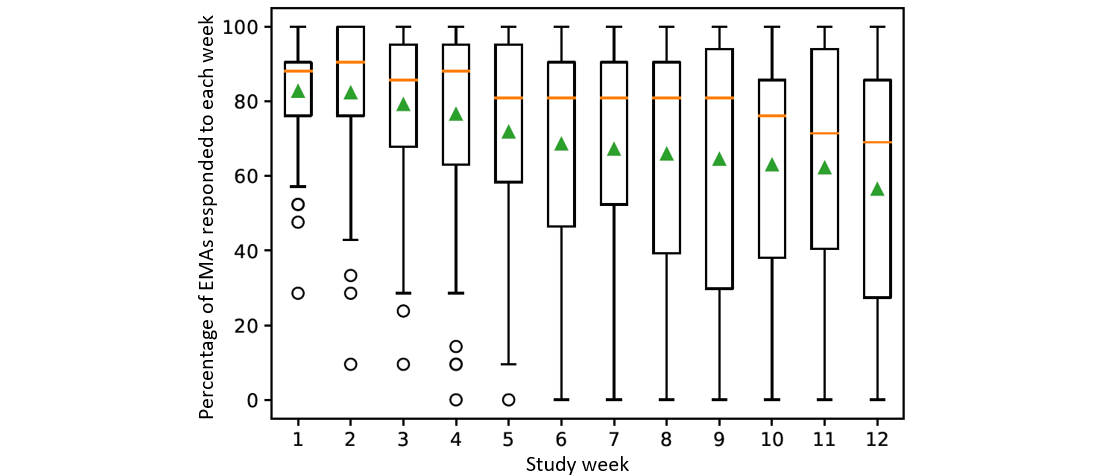
Patient Engagement in Multi-Modal Digital Phenotyping for Opioid Use Disorder
Abstract
Multiple digital data sources can capture moment-to-moment information to advance a robust understanding of opioid use disorder (OUD) behavior, ultimately creating a digital phenotype for each patient. This information can lead to individualized interventions to improve treatment for OUD. The study enrolled 65 patients receiving buprenorphine for OUD between June 2020 and January 2021 from 4 addiction medicine programs in an integrated health care delivery system in Northern California. Ecological momentary assessment (EMA), sensor data, and social media data were collected by smartphone, smartwatch, and social media platforms over a 12-week period. The participants’ average age was 37 years, 47% of them were female, and 71% of them were White. Findings demonstrate that patients receiving buprenorphine treatment for OUD had generally high engagement with multiple digital phenotyping data sources, but this was more limited for the social media data.